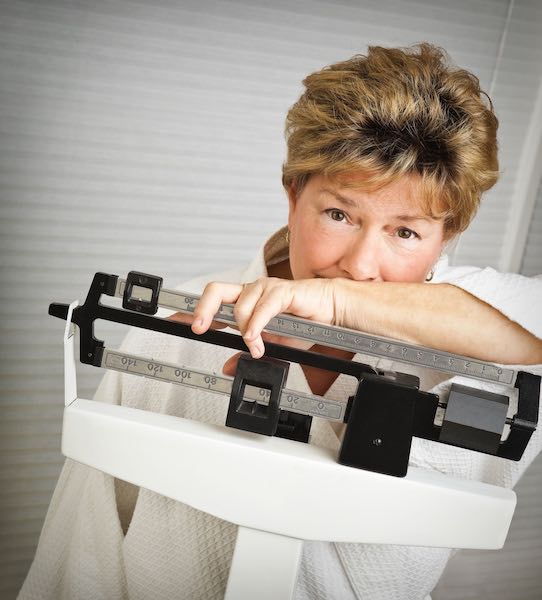Heads Up! Recognizing and Dealing with Sports-Related Concussions
- Details
- Written by Joanne Wallenstein
- Category: Health
 The following was written by Dr. Steven Andelman, Sports Medicine and Orthopedic Surgery
The following was written by Dr. Steven Andelman, Sports Medicine and Orthopedic Surgery
The arrival of football season – professional, amateur, and school-based – unfortunately brings with it a rise in concussion and suspected concussion cases. But it’s not just on the gridiron that such injuries can occur: any contact sport, including hockey, soccer and lacrosse (and even baseball, wrestling and basketball), understandably sees higher incidences of concussions than non-contact sports.
The Centers for Disease Control and Prevention (CDC) defines a concussion as “a type of traumatic brain injury – or TBI – caused by a bump, blow, or jolt to the head or by a hit to the body that causes the head and brain to move rapidly back and forth. This sudden movement can cause the brain to bounce around or twist in the skull, creating chemical changes in the brain and sometimes stretching and damaging brain cells.”
The statistics are sobering. According to the CDC:
• 1.6-3.8 million sports- and recreation -related concussions occur each year in the U.S.
• 10% of all contact sport athletes sustain concussions yearly
• Brain injuries cause more deaths than any other sports injury. In football, brain injuries account for 65% to 95% of all fatalities. Football injuries associated with the brain occur at the rate of one in every 5.5 games. In any given season, 10% of all college players and 20% of all high school players sustain brain injuries
• 87% of professional boxers have sustained a brain injury
• 5% of soccer players sustain brain injuries as a result of their sport
Concussions can occur at any age; various studies estimate that as many as 1.9 million sports- and recreation-related concussions occur  every year among kids 18 and younger. In 2021, a Journal of the American Medical Association (JAMA) report estimated that girls’ chances of sustaining a concussion is 1.88 times higher than boys, with one reason being that the circumference of a female’s neck is generally about 30% smaller than a male’s.
every year among kids 18 and younger. In 2021, a Journal of the American Medical Association (JAMA) report estimated that girls’ chances of sustaining a concussion is 1.88 times higher than boys, with one reason being that the circumference of a female’s neck is generally about 30% smaller than a male’s.
Symptoms of a concussion can vary widely, from a nagging headache, dizziness, and difficulty maintaining balance to nausea and vomiting, convulsions and, if not properly treated, even death.
Fortunately, concussions today are taken much more seriously than in the past; even as little as 10 years ago, it was not uncommon to hear that an athlete had “had his bell rung” when he appeared dazed – or was even unconscious – after an on-field collision. That perception was more or less eliminated during the 2010s, when the NFL instituted concussion protocols, wherein a player suspected of possibly suffering a concussion is immediately removed from the game and examined by a medical professional. If a concussion is confirmed, the player must undergo a five-step process before being allowed to return to the field.
Most sports played at high schools or in extracurricular leagues have their own concussion protocols in place. In the case of younger children, who may play in a park-and-recreation soccer league, for instance, there may not be a medical professional on hand. In such cases, the child should be removed from the game and, if symptoms persist, they should be taken to a healthcare facility. If the child has lost consciousness, it is imperative to get them to an emergency room immediately.
It should be noted that losing consciousness is not the only symptom of a concussion; over 90% of those who sustain one do not lose consciousness. Similarly, you do not necessarily have to take a blow to the head; any sudden jerking of the head, such as what happens in a whiplash injury, can also be a cause.
Preventing concussions can be complicated. Helmets in contact sports are usually mandatory, but while they can offer some protection, a severe hit can still result in a concussion. After mandating the use of “Guardian Caps," a soft-shell, padded covering that goes on the outside of regular football helmets, during its training camps last year, the NFL reported 52% fewer concussions. According to the NFL, wearing a Guardian Cap can result in at least a 10% reduction in severity of impact if one player is wearing it, and at least a 20% reduction in impact if two players in a collision are wearing it.
However, the NFL season is continuing without the cap and, as mentioned, the threat of a concussion remains even when wearing such equipment.
An untreated concussion can have significant effects, sometimes lifelong and even life-threatening. If you suspect that you or a family member has suffered one, I urge you to see a medical professional as soon as you can. As always, safety is the key. Dr. Steven Andelman is an orthopedic surgeon at White Plains Hospital Physician Associates who specializes in adult and pediatric sports medicine. For an appointment, call 914-849-7897.
Dr. Steven Andelman is an orthopedic surgeon at White Plains Hospital Physician Associates who specializes in adult and pediatric sports medicine. For an appointment, call 914-849-7897.
Health Matters: The original version of this article was published in Health Matters, a White Plains Hospital publication.
SVAC Offers COVID and Flu Vaccines to Homebound Residents
- Details
- Written by Joanne Wallenstein
- Category: Health
 Under its Community Paramedicine program, Scarsdale Volunteer Ambulance Corps is offering COVID and flu vaccines to homebound residents effective immediately. Since New York State is no longer providing the vaccine for free, Scarsdale VAC will bill the vaccine recipients’ insurance company. Those interested in receiving homebound vaccinations should write to covid@scarsdalevac.com.
Under its Community Paramedicine program, Scarsdale Volunteer Ambulance Corps is offering COVID and flu vaccines to homebound residents effective immediately. Since New York State is no longer providing the vaccine for free, Scarsdale VAC will bill the vaccine recipients’ insurance company. Those interested in receiving homebound vaccinations should write to covid@scarsdalevac.com.
Scarsdale VAC is considering a Saturday COVID and flu vaccine clinic at the ambulance corps building for anyone three years and older. If you are interested, please email us at covid@scarsdalevac.com. If there is enough interest, a Saturday clinic will be scheduled.
The Battle Against Coronary Artery Disease
- Details
- Written by Joanne Wallenstein
- Category: Health
 Coronary artery disease (CAD), also known as atherosclerosis, is the most common type of heart disease, with the CDC reporting that it killed 375,476 people in 2021. About 5% of those aged 20 and older have CAD – but many may not even be aware of it until serious symptoms occur.
Coronary artery disease (CAD), also known as atherosclerosis, is the most common type of heart disease, with the CDC reporting that it killed 375,476 people in 2021. About 5% of those aged 20 and older have CAD – but many may not even be aware of it until serious symptoms occur.
In fact, CAD may take place over decades, as it involves the buildup of plaque. Plaque is made of several substances, including cholesterol. Plaque buildup can start at an early age and is caused by a combination of genetic and lifestyle risk factors. As plaque builds up over time, the arteries become increasingly narrow; the resulting poor blood flow to the heart can result in angina (chest pain) as well as blood clots, further blocking the arteries and possibly leading to a heart attack.
Indeed, many symptoms of CAD, are similar to those of a heart attack: in addition to chest pain, they may experience tightness in the chest during exertion, shortness of breath, fatigue, and lightheadedness. People who experience these symptoms during exertion may feel relief when they stop physical activity, but if it recurs when they begin exerting themselves, it may be time to visit their primary care physician or a cardiologist.
Causes of CAD include several modifiable factors: high blood pressure, diabetes, smoking, and a lack of exercise can all contribute to developing the disease. In addition, a family history of CAD (primiarly in your parents or siblings) can also be a significant consideration.
Furthermore, men are at a higher risk for developing CAD, although menopause increases a woman’s risk of developing the disease due to the many hormonal changes they experience during and after menopause.
Determining a given patient’s risk for developing (or already having) CAD can involve a number of tests, including a routine blood test, which will reveal if they have low-density lipoprotein (LDL) – commonly called the “bad” cholesterol” –, high-density lipoprotein (HCL) chloesterol (the “good” cholesterol). We also are now checking other markers in the blood like lipoprotein (a) and C-Reactive Protein (CRP), which is an indication of unusual inflammation.
Another test I perform is a coronary calcium score, which is a CT scan that looks at calcification in order to assess your risk of a heart attack over 10 years. There are three levels of results: mild is any number between one and 100; moderate is anywhere from 100 to 300; and severe is any number greater than 300; in fact, a severe score can be several hundred, indicating that action should be taken quickly.
Prevention and Treatment
A good diet can help reduce your risk of coronary artery disease. I recommend eating vegetables, fruits, fish, and legumes. It is also important to get enough exercise; I recommend at least 150 minutes of moderate aerobic activity, or 75 minutes of vigorous aerobic activity, a week. As is always the case, the long-term use of cigarettes or other nicotine products can have serious health risks, including the development or acceleration of CAD.
If a person’s case of CAD is found to be especially concerning, there are several prudent treatment options. These can range from taking medications to undergoing surgery. If you are concerned that you may be at risk for, or already have, CAD, ask your doctor to perform an EKG, bloodwork, and/or a calcium score test.
Dr. Gregory Pontone is a noninvasive cardiologist and the Associate Medical Director of Ambulatory Quality and Physician Services at White Plains Hospital. To make an appointment, call 914-849-4800.
Health Matters
The original version of this article was published in Health Matters, a White Plains Hospital publication.
Nutrition Tweaks for During and After Menopause
- Details
- Written by Joanne Wallenstein
- Category: Health
 The following was submitted by Elizabeth DeRobertis, Registered Dietitian at White Plains Hospital.
The following was submitted by Elizabeth DeRobertis, Registered Dietitian at White Plains Hospital.
Often women come to see me during menopause years, stating that what they used to do in the past to manage their weight does not work anymore – an understandably frustrating situation.
When working on weight management, calories are usually the most important thing. But during menopause there are also many hormonal changes that take place in the body. Often women become more insulin-resistant during this time, which can further complicate the situation, so in addition to looking at calories, I begin to work with women on also managing their carbohydrate intake.
Whenever we eat carbohydrates, our body needs to produce insulin to keep our blood sugar in check. If a woman has a higher carbohydrate intake throughout the day, her insulin level may stay higher – and, as insulin is a fat-storing hormone, it may make it harder to manage weight.
When a woman who comes to see me is feeling “stuck” in this way, often we will change her breakfast routine from a carbohydrate-heavy one to one focused more on protein. This swap can be as simple as shifting from oatmeal to eggs – one basic change that I have seen result in weight loss.
Another modification in the day may be spacing out carbohydrates as to not have too many in one sitting: saving a piece of fruit for an afternoon snack, instead of having it along with lunch, can be a simple modification that can actually help to keep insulin level down, by not having too many carbohydrates in one sitting.
Keep in mind, though, that what’s healthy is not always helpful for weight loss. If someone drinks a smoothie with multiple pieces of fruit at once, the amount of carbohydrates in one sitting may not be helpful for weight management.
There are other things that also take place during menopause that may make it harder to manage weight, with sleep being one of the most important. If a woman is not getting adequate, quality sleep – the general recommendation is seven to nine hours – it can throw off their hormonal balance.
This is also a time in life when exercise may need to change. Often women spend a lot of time focusing on cardio activity; during menopause, however, it’s a good idea to spend some more time lifting weights, as each year we lose a little bit of lean body mass, which decreases metabolism. Making sure that you’re doing adequate weight training can help to keep your metabolism higher.
Research suggests that non-fat dairy products can help you shed pounds while retaining muscle mass. So pairing weight bearing exercise with an increase in non-fat dairy snack choices, such as 0% greek yogurt and cottage cheese, can help to increase lean body mass, which can have a positive impact on metabolism.
Finding a weight-management regime that is right for you should always be a priority. And while menopause may cause some temporary disorder with what had been your usual routine, a few easy adjustments can keep you on a healthy path during this new stage of life.
For more information on the GPS weight loss program, visit https://gps.mykajabi.com/gps.
 Elizabeth DeRobertis is a Registered Dietitian with the Scarsdale Medical Group. To make an appointment, call 914-723-8100.
Elizabeth DeRobertis is a Registered Dietitian with the Scarsdale Medical Group. To make an appointment, call 914-723-8100.
Health Matters: The original version of this article was published in Health Matters, a White Plains Hospital publication.
Pickleball Pilot Program To Launch at Crossway Tennis Courts
- Details
- Written by Joanne Wallenstein
- Category: Health
 Good news for Pickleball fans. The hard tennis courts at Crossway will be converted to pickleball courts for a pilot program starting on September 18 Through October 31. In order to participate Scarsdale residents must purchase a crossway pickleball pilot permit for a fee of $30. Residents wishing to take advantage of this program opportunity can purchase a permit online here: https://www.scarsdale.com/208/Tennis-Platform-Tennis-Pickleball or at the Department of Parks Recreation and Conservation. Located at 244 Heathcoat Road.
Good news for Pickleball fans. The hard tennis courts at Crossway will be converted to pickleball courts for a pilot program starting on September 18 Through October 31. In order to participate Scarsdale residents must purchase a crossway pickleball pilot permit for a fee of $30. Residents wishing to take advantage of this program opportunity can purchase a permit online here: https://www.scarsdale.com/208/Tennis-Platform-Tennis-Pickleball or at the Department of Parks Recreation and Conservation. Located at 244 Heathcoat Road.
Only Crossway pickleball permit holders will be able to reserve court time and reservations can be made here: https://secure.rec1.com/NY/village-of-scarsdale-ny/catalog
The hours of play for the pickleball pilot program are 9am to dusk daily. Players without permits must show proof of Scarsdale residency, and the fee is $15 per player per hour. Non resident guests may only play on weekends between noon and 4pm and must play with a resident. The non-resident guests fee is $20 per player per hour. All players must check in with the attendant before playing.
Enjoy pickleball this fall and sign up today. Please call the Parks Recreation and Conservation Department with any questions you can reach our staff at 914-722-1160.














